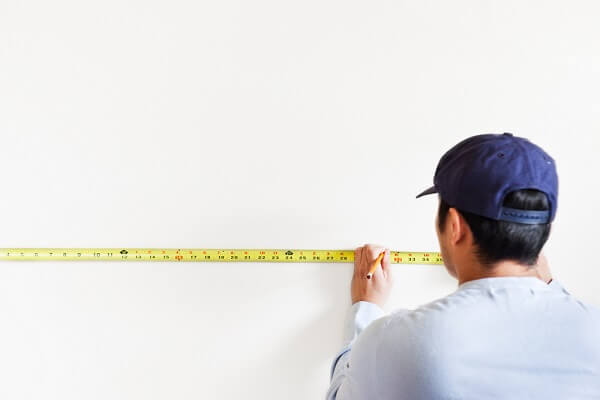Aim: To explore the mathematical relationship in distance of light source, object, and shadow
Hypothesis: A mathematical formula will be able to be derived from objects close by. The accuracy will be limited due to diffraction of light around the object. The relationship will likely follow the inverse square law (as in light intensity and distance).
Equipment:
Tape
Light source
Ruler
Measuring tape
Procedure:
1. I taped the ruler horizontally to a white wall and made sure the upper side is level with where the light source is (like this)
2. Attached the end of the measuring tape to the centre of the ruler (that metal bit on the tape, it is hooked behind the taped ruler) Such that they were perpendicular, and the tape coming from my side to the wall.
3. I used a rectangular card that doesn't light pass through it and put it on top of the measruing tape then shone a light right behind it. Now on the measuring tape, I can see the distance between the object and the shadow (that is cast on the wall where the ruler is) and the light source from the object.
Also, note that the light source should be directly behind the card and wall so that there is no angle.
4. The shadow will now be on the ruler, and it is easy to tell how long the shadow is (as you can see where it stops and ends on the ruler)
5. Record various results and compare them
Picture of set up:
(SOON)
I drew a table and (optionally) a graph for the table. The distance being on the X axis and the shadow size on the Y axis. Also included written results on observations. Diagrams/sketches were not needed.
I found that my hypothesis was wrong in thinking it would follow the inverse square law; light just travels in straight lines! Therefore, shadow size and distance are inversely proportional.
To make the results more reliable, use small distances between object and shadow. This is because diffraction occurs as light meets an obstruction, reducing the apparent size of the shadow.
Conclusion: It is now clear that the results are because light travels in a straight line.
From my results, I obtained the formula:
z/c = y2/y1
(ratio between shadow and object is = ratio between total distance and distance between shadow and object)
z= total distance between light source and wall
c= distance from object and wall
y1 = card width or length
y2 = shadow width or length
Hypothesis: A mathematical formula will be able to be derived from objects close by. The accuracy will be limited due to diffraction of light around the object. The relationship will likely follow the inverse square law (as in light intensity and distance).
Equipment:
Tape
Light source
Ruler
Measuring tape
Procedure:
1. I taped the ruler horizontally to a white wall and made sure the upper side is level with where the light source is (like this)
2. Attached the end of the measuring tape to the centre of the ruler (that metal bit on the tape, it is hooked behind the taped ruler) Such that they were perpendicular, and the tape coming from my side to the wall.
3. I used a rectangular card that doesn't light pass through it and put it on top of the measruing tape then shone a light right behind it. Now on the measuring tape, I can see the distance between the object and the shadow (that is cast on the wall where the ruler is) and the light source from the object.
Also, note that the light source should be directly behind the card and wall so that there is no angle.
4. The shadow will now be on the ruler, and it is easy to tell how long the shadow is (as you can see where it stops and ends on the ruler)
5. Record various results and compare them
Picture of set up:
(SOON)
I drew a table and (optionally) a graph for the table. The distance being on the X axis and the shadow size on the Y axis. Also included written results on observations. Diagrams/sketches were not needed.
I found that my hypothesis was wrong in thinking it would follow the inverse square law; light just travels in straight lines! Therefore, shadow size and distance are inversely proportional.
To make the results more reliable, use small distances between object and shadow. This is because diffraction occurs as light meets an obstruction, reducing the apparent size of the shadow.
Conclusion: It is now clear that the results are because light travels in a straight line.
From my results, I obtained the formula:
z/c = y2/y1
(ratio between shadow and object is = ratio between total distance and distance between shadow and object)
z= total distance between light source and wall
c= distance from object and wall
y1 = card width or length
y2 = shadow width or length
